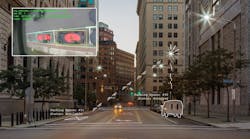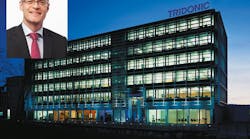It’s time for legislators to consider aspects of LED lighting other than energy efficiency, the industry association says in a position paper that reaffirms its push towards human-centric lighting.
Industry association LightingEurope has called for European legislators to include light quality in government mandates that today emphasize energy and efficiency but which neglect precepts of safety, human health and wellbeing, and task performance that LED lighting could specifically offer.
Interested in articles & announcements on human-centric lighting?
The position statement reaffirms the group’s backing of human-centric lighting (HCL) to help drive the industry forward.
HCL is a broad area recognizing that different light levels, brightness, colors, and color temperatures can have both beneficial and detrimental effects in different situations. It aims to tune lighting to different settings that optimize situations.
LightingEurope president and Philips vice president Jan Denneman believes that human-centric lighting can add tremendous value to society and to the lighting industry. Source: Mark Halper.
For example, some studies have suggested that schools increase the levels of blue frequencies in the morning to help stimulate alertness. Along the same lines, many studies have shown that blue hues at night can undermine sleep, and thus call for more relaxing reds and oranges. The upshot in both cases is that indoor lighting should mimic the patterns of natural daylight that support human circadian rhythms.
In one application, researchers believe that circadian lighting can help treat dementia patients.
The LightingEurope statement addresses both indoor and outdoor lighting. It notes that efficiency regulations can actually undermine safety.
“Whilst saving energy is very important for the environment, we should not forget the importance of addressing human comfort, well-being, and task performance, via good quality lighting,” it says. “There are few if no mandatory requirements for the provision of minimum light quality and most that do exist are negative criteria, i.e. the absence of discomfort does not imply the presence of comfort.
“However there are an increasing number of mandatory energy efficiency requirements, creating a serious possibility that lighting will be dimmed or switched off. Creating dim or dark spaces will decrease safety, security and comfort in outdoor applications, and reduce productivity, performance, health and well-being within indoor spaces. This has to be unacceptable.”
LightingEurope represents over 1000 lighting companies across Europe including Philips, Osram, and GE. It placed human-centric lighting squarely on the strategic 10-year roadmap that it unfurled at the Light+Building trade fair in Frankfurt earlier this year, although HCL does not seem to solidify in that trajectory until around 2025.
Legislative initiatives could help expedite its adoption, as LightingEurope strives for a framework that establishes the “value of light to society” by delivering the right light in the right place at the right time of day or night.
The HCL movement acknowledges that energy efficiency is now a de rigueur benefit of LED lighting (LED bulbs require only about 10% of the electricity of incandescent bulbs, and prices have tumbled to where they are now becoming common), and that HCL represents enormous new value for the lighting industry. That will be important as the industry loses the replacement bulb market — LED lamps are said to last for decades — and as it starts searching for new selling points and business models, including lighting-as-a-service.
HCL takes advantage of LEDs’ tunable nature. As diodes, LEDs lend themselves to intelligent controls and information technology networks in which operators can dial in different frequencies, brightness, and on/off settings to trigger at certain times or in response to changing situations. By combining light sources with sensors and with Internet of Thing (IoT) chips and gadgets, smart lighting networks can also take note of their effectiveness, analyze the data they collect, and thus learn from their ongoing operation.
Lighting vendors are increasingly looking towards selling smart, connected systems as either products or on a service basis.
MARK HALPERis a contributing editor for LEDs Magazine, and an energy, technology, and business journalist ([email protected]).



![An installer uses a cell phone to configure a connected lighting system in a Next Generation Lighting Systems (NGLS) living lab. [Photo credit: Image courtesy of Pacific Northwest National Laboratory (PNNL) and NGLS.] An installer uses a cell phone to configure a connected lighting system in a Next Generation Lighting Systems (NGLS) living lab. [Photo credit: Image courtesy of Pacific Northwest National Laboratory (PNNL) and NGLS.]](https://img.ledsmagazine.com/files/base/ebm/leds/image/2020/06/NGLS_Photo_2.5ed693de53fa2.png?auto=format,compress&fit=crop&q=45&h=139&height=139&w=250&width=250)


